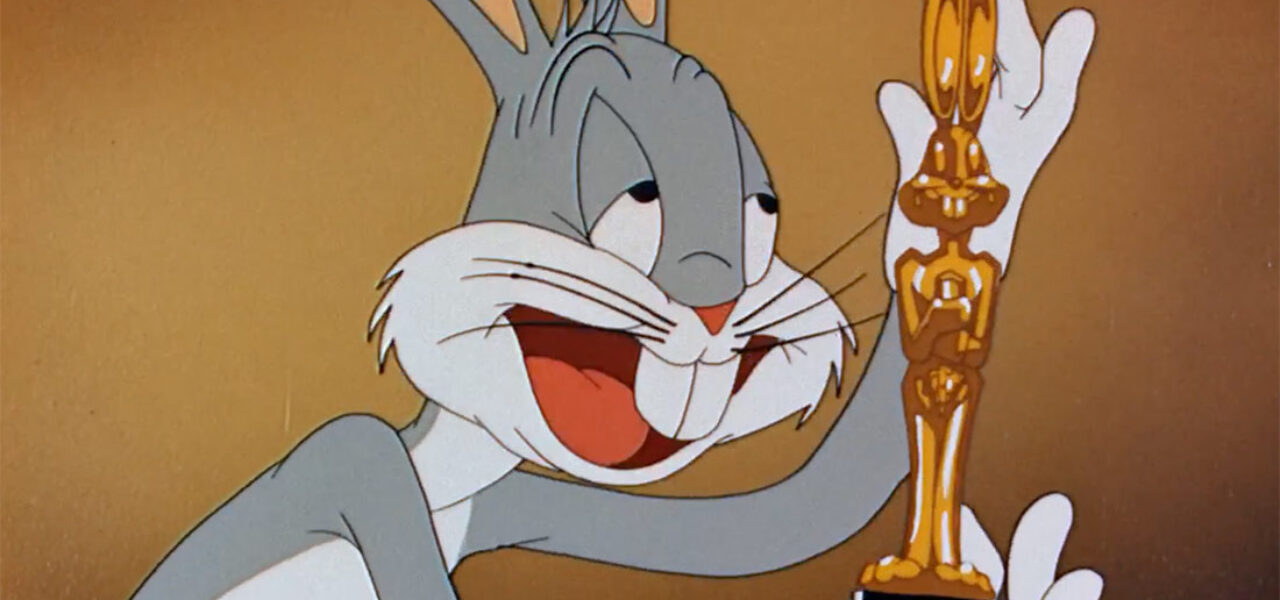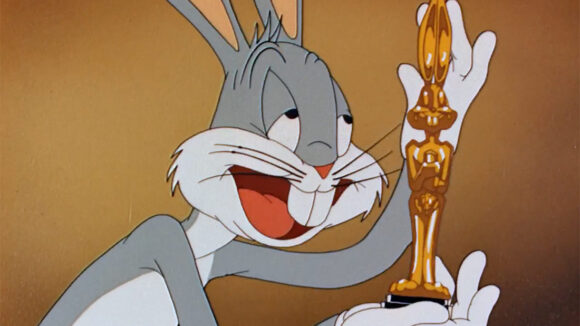

16 Times The Oscars Snubbed Greats Animated Shorts And Directors
The Academy Awards have received heavy criticism this year for cutting the best animated short film category from the live telecast. It’s one big snub for a category that has a history of snubbing important artists and films.
If you go back to the early years of the animated shorts category, which began in 1932, the selections rarely correspond with the films we now consider classics, and some of the choices almost seem to have been randomly plucked out of a hat.
There are any number of great films from the Golden Age of animation that deserved awards attention, but for this roundup of Oscar snubs, I’m only posting clips from films that I can confirm were submitted to the Academy and weren’t nominated. Even with incomplete information, there’s a lot to choose from.
For a good example right off the bat, the jazzy Friz Freleng short The Three Little Bops is still a favorite among cartoon fans – an impressive feat for a film over 60 years old – but it was submitted for an Academy Award in 1956 and didn’t get a nomination. The statue that year went to Magoo’s Puddle Jumper, a routine Mr. Magoo short only notable for having won the Oscar.
— Cartoon Study (@CartoonStudy) March 26, 2022
The Walt Disney studio won the Best Animated Short Oscar every year for the first eight years of the category’s existence (the winning streak was only broken because Walt charitably opted not to submit any films for 1940). By contrast, the gloriously strange Max Fleischer cartoons never won and were rarely nominated. Records of Academy submissions in the 1930s are scarce, but according to the Film Daily, Popeye the Sailor Meets Ali Baba’s Forty Thieves (1937) was under consideration and didn’t get a nomination. This 17-minute epic is equal parts thrilling and funny, featuring stunning early Technicolor and eye-popping 3d backgrounds courtesy of Fleischer’s patented Stereoptical Process. If this isn’t Oscar-worthy, what is?
— Cartoon Study (@CartoonStudy) March 26, 2022
It’s hard to get more classic than You Ought to be in Pictures (1940), where Daffy Duck convinces Porky Pig to quit the cartoon business. The short’s ambitious mix of live-action and animation still looks incredible 80+ years later, and the film was a clear influence on Who Framed Roger Rabbit, but the Academy wasn’t impressed. The year’s big winner was the ultra-cute Harman-Ising short The Milky Way, which for some reason beat out fellow nominees Puss Gets the Boot (the cartoon that introduced Tom & Jerry) and A Wild Hare (the cartoon that introduced Bugs Bunny).
— Cartoon Study (@CartoonStudy) March 26, 2022
Bob Clampett, animation’s ultimate wildman, belongs on the Mount Rushmore of cartoon directors, but he never once received an Oscar nomination for anything. I don’t know which of his many head-spinning Looney Tunes classics were Oscar considerations, but Clampett mentioned in an interview with Michael Barrier that his insane gremlin cartoon Falling Hare (1943) was submitted to the Academy and got zip. You’d think that the daring layouts and comic distortion in the breakneck climax would’ve gotten the Academy’s attention, but alas.
— Cartoon Study (@CartoonStudy) March 26, 2022
And the King of Cartoons himself – Tex Avery – never won an Academy Award for animated short. That’s like Alfred Hitchcock or Orson Welles never winning the best director award (which they didn’t, but still). Avery’s works are the most outrageously hilarious animated films ever made, and he did more than anyone to create the style of zany comedy we now associate with the word “cartoon.” You can see his comic talents at their sharpest in the MGM short From Wags to Riches (1949), which the Academy screened and snubbed.
— Cartoon Study (@CartoonStudy) March 26, 2022
Tom & Jerry won a whopping seven Oscars (that’s four more than Meryl Streep). And as much as I adore Tom & Jerry, the cat and mouse’s utter dominance did shut out other deserving cartoon stars, most obviously Bugs Bunny. The wiseguy wabbit’s legendary run of great cartoons in the 1940s-’50s went almost completely ignored by the Academy, until they finally handed Bugs a consolation prize for the unexceptional late-period entry Knighty Knight Bugs (1958). This clip from Ballot Box Bunny (1951), one of many wonderful Bugs shorts submitted to and rejected by the Academy, cracks me up whenever I see it. But, hey, at least Bugs has one Oscar to his name… poor Daffy Duck has never been nominated once (cue cricket noises).
— Cartoon Study (@CartoonStudy) March 26, 2022
Duck Amuck (1953) is – to me – the greatest cartoon ever made. Chuck Jones’ fourth-wall-smashing masterpiece aggressively dismantles Daffy’s reality while simultaneously confirming it; we fully believe in Daffy as a character, no matter how many times the film reminds us he’s only a cartoon. Perhaps this was too cerebral for the Academy, because they deemed Duck Amuck unworthy of a nomination. As Chuck Jones wrote in a letter to his daughter Linda in 1953, “We didn’t get into the finals for the Academy. Very, very disappointing. I had high hopes for that picture. Like Stevenson, I can only say that I’m too old to cry, but it hurts too much to laugh. I know it is a fine audience picture; perhaps it just isn’t as unusual as I thought it was.” Thankfully, Chuck lived long enough to see the film earn the acclaim it always deserved.
— Cartoon Study (@CartoonStudy) March 26, 2022
And then there’s What’s Opera, Doc? (1957). It was voted the greatest cartoon of all time by over one thousand animation professionals; it was the first animated short to be preserved by the National Film Registry; and even the most casual cartoon fan can quote, “Kill da wabbit! Kill da wabbit!” But somehow, the Academy shrugged it off in favor of instantly forgettable shorts like Trees and Jamaica Daddy and One Droopy Knight. Thankfully, there were no hard feelings; director Chuck Jones later quipped, “I had very low opinions about the Academy Awards until I won one, and then I realized how truly distinguished its recipients are.”
— Cartoon Study (@CartoonStudy) March 26, 2022
John Hubley, former creative director at UPA, went on to win a couple of Oscars, but he may have been too far ahead of his time with The Adventures of * (1957). This film heralded a totally new type of animation influenced by modern art and jazz, with boldly abstracted characters that shift in design based on mood. The film’s story of lost childhood is genuinely touching, and the soundtrack by Benny Carter and Lionel Hampton is unbeatable, but this was just too out-there for the Oscars in 1958.
— Cartoon Study (@CartoonStudy) March 26, 2022
Ernest Pintoff’s Flebus is one of the most artistically bold cartoons of its era, using thickly outlined designs and stark blocks of color to satirize midcentury psychotherapy. Particularly impressive that it came from the Terrytoons studio, which had a reputation as a bottom-rung studio by Golden Age standards. Terrytoons picked up several nominations for unremarkable shorts like All Out for ‘V’ (1942) and My Boy Johnny (1944), but here they did something truly original and got ignored. See for yourself in this nice Cinemascope print of the film (owned by Jerry Beck):
— Cartoon Study (@CartoonStudy) March 26, 2022
Between the 1930s and 1950s, the Academy didn’t nominate any animated shorts produced outside of North America (the first aberration was the Czech film A Place in the Sun, nominated in 1960). They certainly missed the boat on a lot of classics from the Yugoslavian studio Zagreb Film, which was making the most exciting and inventive cartoons of the late 1950s and ’60s. Picolo (1959) by Dušan Vukotić is an ingenious anti-war satire that combines UPA stylization and Looney Tunes-style gags to create a completely original sensibility. To their credit, the Academy eventually gave Zagreb an Oscar for the masterful Ersatz (1961), but they skipped over equally brilliant and off-kilter submissions like The Cow on the Moon (1959), Woof-Woof (1964), Masque of the Red Death (1969), and The Diary (1974).
— Cartoon Study (@CartoonStudy) March 26, 2022
Another animator outside of the U.S. who deserved Oscar recognition was Fyodor Chitruk, whose influential films moved Soviet animation away from Disney-inspired realism into stylized abstraction. His short Boniface’s Holiday (1965) is an absolute delight in its eye-popping colors and classy designs. Still… no Oscar.
— Cartoon Study (@CartoonStudy) March 26, 2022
The Hand (1965) was the final film of Czech stop-motion pioneer Jiří Trnka and it is undeniably his masterpiece. The short’s wise message against artistic censorship earned it accolades, but also got it banned from public display in communist Czechoslovakia until the fall of the Soviet Union in 1993. The film didn’t receive an Academy Award nomination, but today it’s considered one of the greatest animated shorts ever made and its message is still relevant.
— Cartoon Study (@CartoonStudy) March 27, 2022
The first animated short solely directed by a woman to receive an Oscar nomination was Caroline Leaf’s The Street (1976), but there were many earlier women animators who also deserved awards recognition. Hermína Týrlová directed over 60 stop-motion shorts but never got any Oscar attention. Her lovely film The Little Blue Apron (1965) was submitted but passed over.
— Cartoon Study (@CartoonStudy) March 27, 2022
I don’t want to veer too far beyond the first few decades of the category or this overview will never end, but I’ve got to mention Sally Cruikshank’s cult classic Quasi at the Quackadero (1975), which was one of the few post-Golden Age shorts to appear in The Fifty Greatest Cartoons book by Jerry Beck and was preserved by the National Film Registry. It’s so deliciously wonky and imaginative, but apparently wonky and imaginative are not the Academy’s style.
— Cartoon Study (@CartoonStudy) March 27, 2022
To be fair, it’s easier to identify what deserves classic status with the benefit of hindsight, but there are many equally head-scratching decisions even in recent years. A good example is Don Hertzfeldt’s short Everything Will Be OK (2006), which won dozens of film festival accolades and received enormous acclaim even outside of animation circles. Variety named it one of the best films of 2007, and it won the 2007 Sundance Film Festival Jury Award in Short Filmmaking, an honor rarely given to animated films. It was submitted for an Oscar but wasn’t nominated because… well, who knows?
— Cartoon Study (@CartoonStudy) March 27, 2022
Certainly none of this takes away from the great achievements of the nominated artists, who have all done extraordinary work (this year’s crop of nominees look fantastic). But if you didn’t get nominated, at least you’re in the same boat as Bob Clampett.
— Cartoon Study (@CartoonStudy) March 27, 2022
Thanks to Don Yowp at Tralfaz and Jerry Beck at Cartoon Research for the lists of Oscar submissions.
